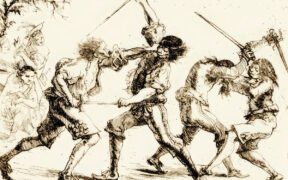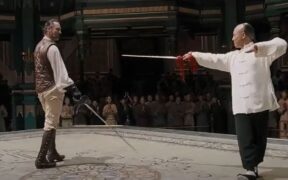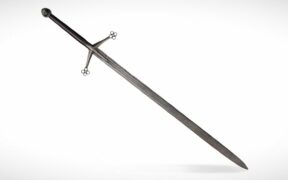Our content features commercial links to our products, committed to transparent, unbiased, and informed editorial recommendations. Learn More
The Basket Hilt Sword: The Safest Sword to Use in Battle
NO AI USED This Article has been written and edited by our team with no help of the AI
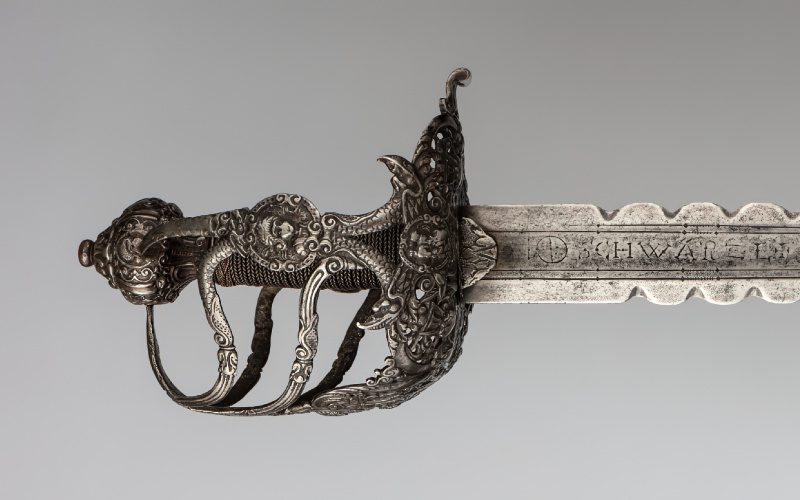
Basket-hilted swords are a group of swords that have an extremely pronounced metallic basket on their hilt. They date back to the late middle ages and today are linked to either dueling or the famous broadsword from the Scottish Highlands.
In this article, you shall learn about everything you need to know about basket-hilted swords. You will find out about all of the types that existed and their main characteristics. You will also learn about the many uses the basket has and the history behind it. Finally, we will compare it to a regular-styled hilt and attempt to determine which is better.
Types of Basket Hilt Swords
There are many types of basket-hilt swords because the baskets can be added on to just about any type of sword and thereby turn it into a basket-hilted sword. With that being said, there are just a few swords that evolved to utilize this basket more so than others.
Early Germanic
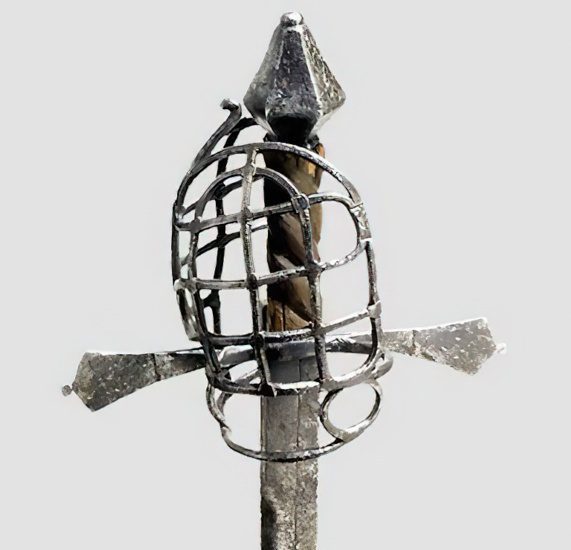
The first types of basket-hilt swords came from the early Germanic region of the world. As you can see from the photo below, early models were very crude and not ornate looking.
They started appearing in the early 16th century and were basically experiments on how to protect the hand of the wielder best. The goal was very simple – find a way to insert the hand in a safety bubble and protect it from any possible strikes during combat.
These early Germanic basket hilts, as well as similar variants, can generally be linked to other basket-hilt swords that would follow in the coming centuries. This style can be thought of as the grandfather of basket hilts in history.
Sinclair
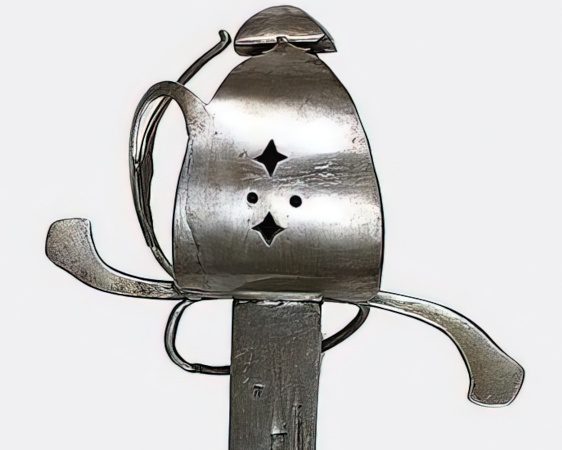
The Sinclair Hilt became one of the first designs for a basket hilt. It came from southern Germany and had a long quillon or guard. It also featured an odd oval-shaped leather-wrapped handle that was originally made for falchion swords but was soon used on broadswords as well. It became so popular that this style of the hilt was also used on cutlasses, sabers, backswords, rapiers, and even hunting hangers used by the common folk.
The extra protection became so useful in battle because it allowed sword users to move more freely on the offensive. The Palash sword used by the Austrians heavily based their entire cavalry units on it, and it also inspired a lot of the swords used by the British cavalry.
As it influenced Brittian, it began to move north and leave its mark there, too, in Scotland. Its thought that George Sinclair’s mercenary conscripts, who had continued to serve on the mainland of Europe, brought these swords back to Scotland, where it revolutionized how the Scottish broadswords were made.
These Sinclair swords were usually around 29 inches long (75 cm) and around 3.8 lbs in weight (1.5 kg).
Scottish Basket Hilted Broadsword
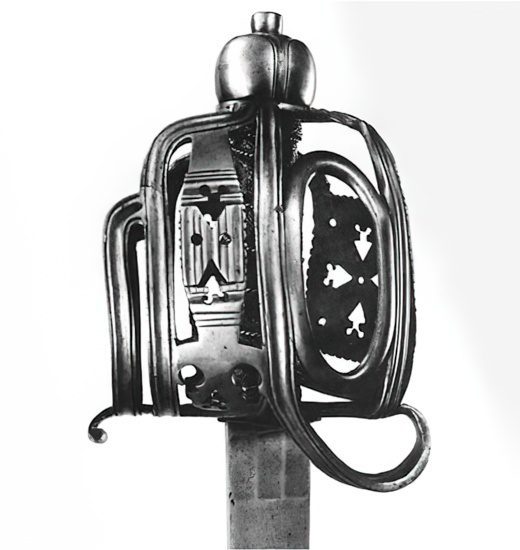
The preference for light weapons and little armor among the clans of Scotland led to the development of one-handed basket-hilted broadswords. The soldiers were required to march for long distances, and it was difficult to wield or carry two-handed swords at the same time. Soldiers began using dirks with small shields or these one-handed basket-hilted variants instead of their larger swords.
It’s crucial to note that there is no one sword that can be called a broadsword, and the name broadsword is often misused today. The Scottish basket-hilted sword had a broader version of the blade, hence the name.
Today, this sword is linked to Scottish highlanders as both a dueling and large-scale battle weapon. It became a national symbol of the Scottish highlands after the Jacobite rebellion in the year 1745.
The Scottish Broadsword, sometimes even called great sword, has an overall length of around 30 inches (75 cm) and can weigh between 2.2 to 3.3 lbs (1 to 1.5 kg) based on how wide the blade is.
Schiavona
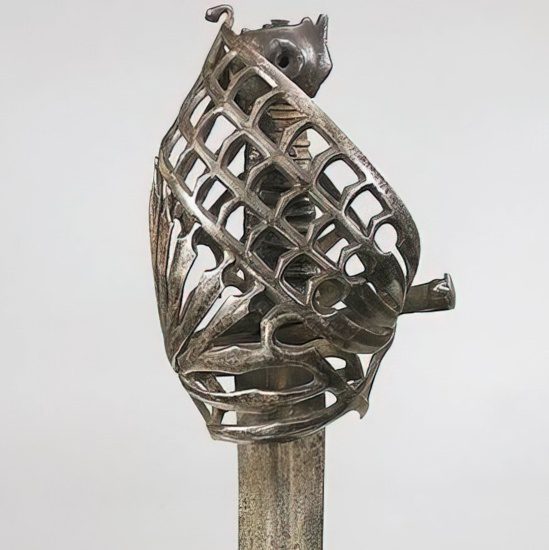
The Schiavona was popular in Italy throughout the 16th and 17th centuries and was created during the height of the Renaissance. The term and name originate from the Dalmatian Slavs, Schiavoni, and Istrian, who made up a significant portion of the bodyguard that protected the Doge of Venice in the 16th century. These Balkan mercenaries were responsible for providing security to the Doge, and the basket-hilted Schianova allowed them to provide it.
It has a distinct “cat’s-head pommel” and an unusual handguard made out of several leaf-shaped brass or iron bars that were linked to the guard and knuckle guard instead of the pommel. Both of these features contributed to the weapon’s widespread popularity.
During the 17th century, the Schiavona was the preferred weapon for several heavy cavalry units in the world and became widespread throughout armies of nations that conducted business with Italy.
The average length of the Schiavona is around 35 inches (90cm) in length, and it weighs around 2.4 lbs (1.1 kg). The basket hilt is around 6 inches (5-6 cm) in width and offers a lot of protection for the user of the sword.
Mortuary
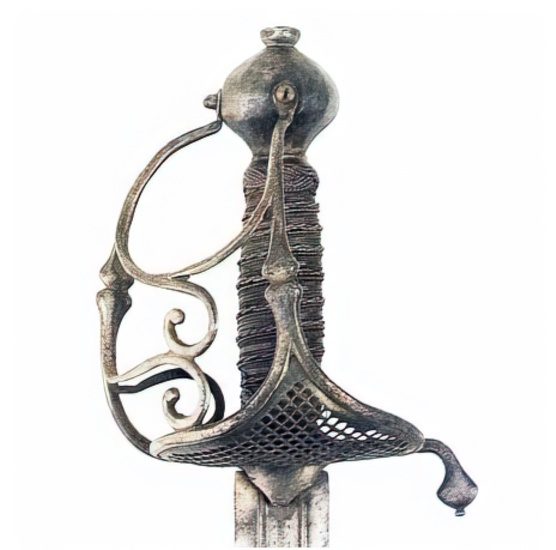
The Mortuary hilt sword was a weapon that was used by the mounted army throughout the Civil War in England after the year 1625. It had a very interesting basket hilt and could either be double or single-edged.
Following the execution of Monarch Charles I in 1649, basket-hilted swords were created with hilts that were supposed to represent the death mask of the “martyred” king. As a result, these blades are often referred to as Mortuary swords.
The usage of Mortuary swords continued until the latter half of the 17th century, at which point they started to lose popularity among commoners and were gradually phased out in favor of the smallsword.
The Mortuary sword, with its distinct basket hilt, had a blade around 33 inches long (85 cm), an overall length of around 39 inches (100 cm), and a basket hilt around 2 inches wide(5 cm). This basket-hilted sword weighed around 2.2 lbs (1 kg).
Walloon
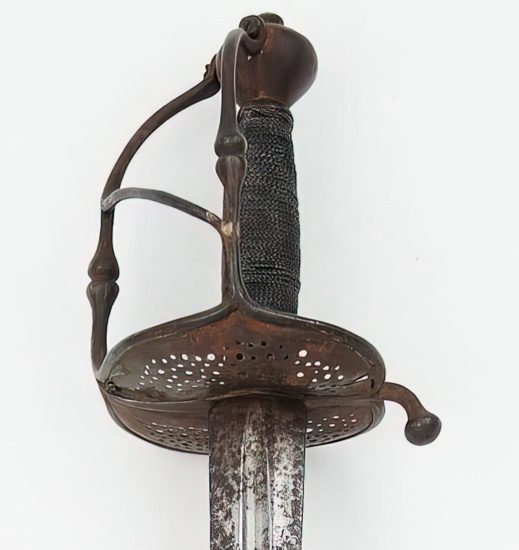
During the 30 Years War and the Baroque period (1618-1648), the so-called “Walloon sword” was popular in Switzerland, Germany, Scandinavia, and the Netherlands. Rapiers from the same period that have a basket handle are also called Pappenheimer rapiers.
The Walloon sword was indeed a favorite of both soldiers and aristocrats. Its hilt could be held by either hand and had shell guards with a knuckle bow that was similar to other European basket hilts from the 18th century.
After their initiative in the Netherlands in 1672, the French started making this sword their standard weapon which would give rise to the Napoleonic weapons used later on in history. The length of the Walloon basket-hilted sword is around 37 inches long (95cm) and it weighs around 2.6 lbs (1.2 kg).
Characteristics of the Basket Hilt Swords
Basket hilt swords can be easily spotted and recognized thanks to their very large basket hilt encompassing the handle and their straight blade.
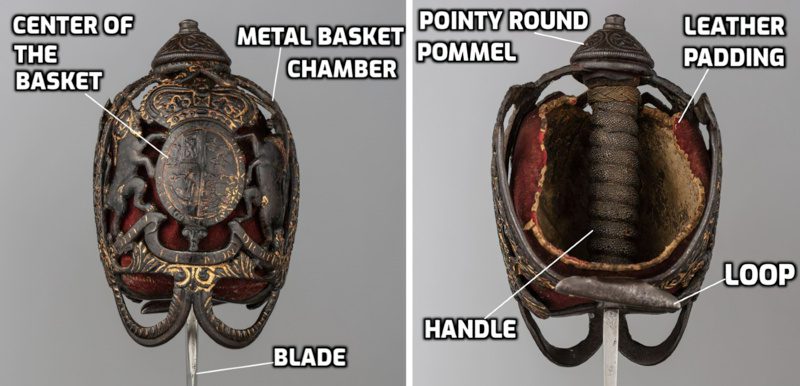
Blade
The blade of the Basket hilt swords are straight and can be single or double-edged. Depending on the sword, some have thinner blades while others have much wider ones. It often varied based on how long the sword was, with smaller swords having thinner blades and longer swords having wider blades.
Guard & Handle
The basket-hilt handle and guard are what give the basket-hilt swords their name. It’s easily the most defining and visually distinguishable characteristic. The Basket guard is basically metal rods interlinked with each other to form a protective cage around the user’s hand.
The basket or cage can come in many different designs and sizes, but it is generally accepted that it is made of hardened metal so it can absorb hits from any incoming attack. This cage usually has some type of leather inside of it or any material that can give the user’s hand more comfort and a better grip.
The most common width for the basket hilt is 2 to 2.7 inches (5 to 7 cm). At this size, it can completely encompass the user’s hand and keep it safe. The length of the basket hilt, however, can vary from 4 to 7.8 inches (10 to 20 cm). The baskets are usually made the same length as the handle and can even extend toward the start of the blade ever so slightly.
Loop
On the very front of the basket hilt, there are sometimes one or maybe two loops. These loops aren’t made just for looks and decorative purposes. Instead, they are used for catching and pushing away the enemy’s shield so that they can follow up with a deadly slash.
Scabbard
These types of swords have the same type of scabbard as any other sword. The basket doesn’t necessarily affect how the sword fits into the scabbard. They can be made out of leather, steel, or wood.
Size & Length
The usual length for the basket hilt sword is 27 to 41 inches long (70 to 105 cm). This is the ideal size for a one-handed sword.
Weight
The weight of these types of swords usually depends on what type of blade they have. The range for the weight of basket hilt swords is usually anywhere from 1.7 to 3.7 lbs (800 grams to 1.7 kg).
Uses for the Basket Hilt Swords
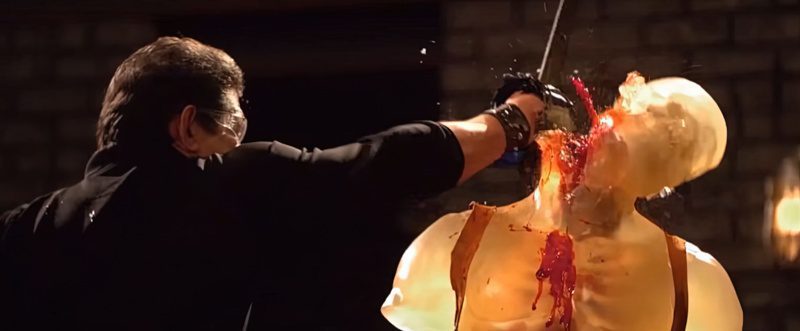
Basket hilt swords are used one-handed with either a shield or a smaller knife or dagger in the other hand. They are meant to be used for both slashing and striking if they are made double-edged, which they tend to be.
Warfare
These types of swords were used throughout western Europe starting from the late middle ages and especially evolved into regular daily and military use in the renaissance period. It came about as an experiment and need to protect the user’s hand better.
They are used as a one-handed sword and, most of the time, with a small or large shield in the other hand. They are known for being used by Scottish warriors in warfare, and they proved deadly.
Fencing & Martial Art
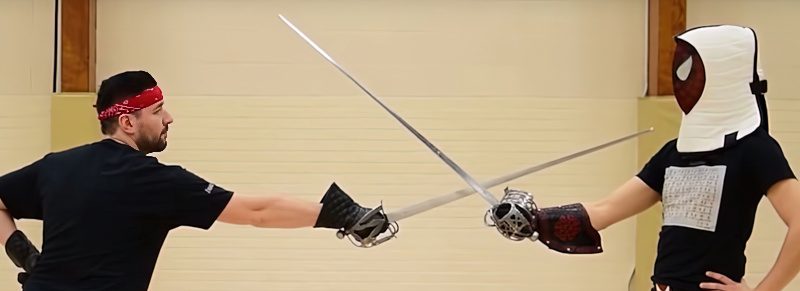
During the 18th century, dueling with the lighter smallsword was all the trend in Europe, yet in Scotland, broadsword fencing was considered to be something of a national pastime. Throughout the course of the 18th century, a number of fencing books were written that focused on the use of the Scottish basket-hilted broadsword.
The reason why these swords are so heavily linked to Scotland, even though they were used all over Europe, is because of their widespread use in fencing. Today there are many martial arts not just linked to the north British highlands; instead, they can be used for fencing everywhere throughout the world.
Is it Beginner Friendly?
If you are a follower of Historical European Martial Arts (HEMA), you will definitely need to give the basket hilt sword a try. It’s considered a beginner-friendly sword to use thanks to its lightweight and the fact that it’s easy to control. It also offers the most safety for your hand, something you’ll be thankful for when you begin dueling.
If you master this type of fencing, you will be able to approach much more intricate and harder swords in time.
History of the Basket Hilt Swords
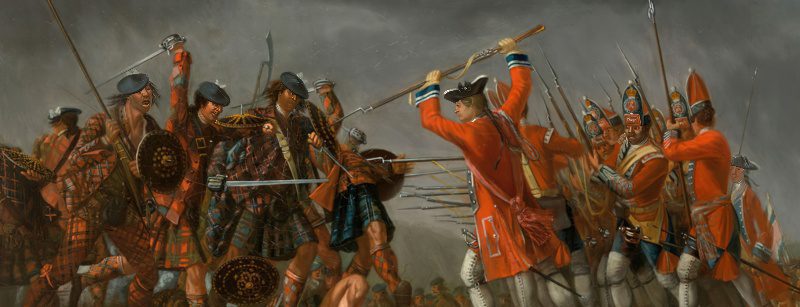
The quillons or crossguards on older medieval military swords from the middle ages served as the principal means of protection for the user’s hand. The basket, often known as the basket hilt, is an innovation that evolved from these features. It quickly grew in popularity and began to be used by noblemen and common folk alike.
Since it nearly encircled the entirety of the user’s hand, the basket provided an increased level of protection for the wielder. These first appeared as fairly simple weaving patterns but eventually developed into more intricate and decorative motifs.
They were invented in the 16th century and continued to gain popularity during the 17th and 18th centuries, during which time they were preferred by heavy cavalry right up to the time of Napoleon and the many sabres used in his wars.
Today, they are very well known and usually linked directly to the Scottish Broadsword. Some believe that these swords were only used for fencing and duels when in fact, they were used throughout battles and wars during that time period.
Basket Hilt Sword Vs. Regular Hilt Sword
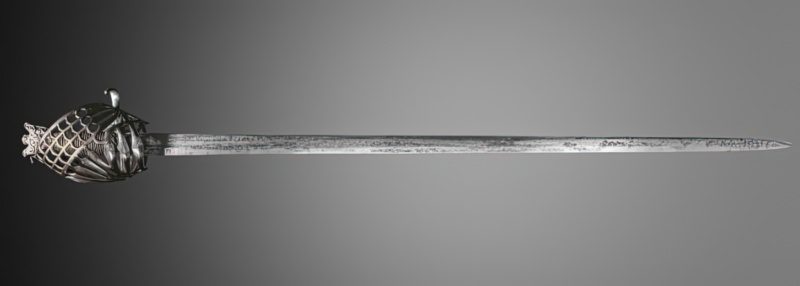
There are many advantages and disadvantages that come with a basket-hilt sword. The biggest thing to be mentioned is the wheeling motions that you are unable to perform with it. If you place your hand inside the metal basket, you won’t have the same range and flexibility as you would with an open handle.
Although they don’t add a lot of weight, some found that the basket caused the user to tire more quickly than other users with non-basket-hilted swords. Another disadvantage is that since these swords were used with one hand only, you wouldn’t be able to muster as much power as an opponent with a two-handed sword.
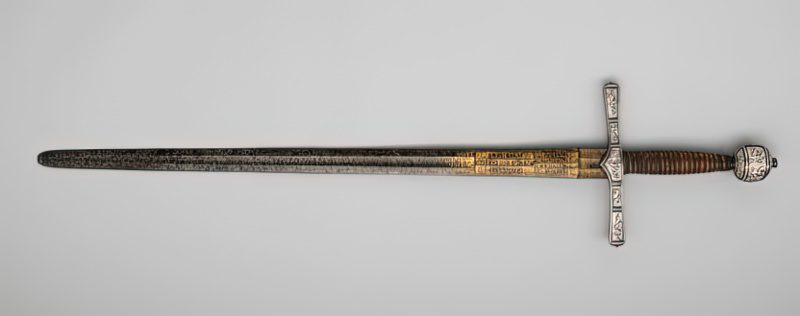
On the other hand, basket hilt swords added an extra layer of protection for both the wrist and hand. One-handed sword fights are extremely fast, and this extra layer of protection can give you a significant advantage.
The opponent will be unable to strike your hand and disarm you when you use a basket-hilted sword, but your own capacity to use the sword is hindered as a result.
Conclusion
Today, the basket hilt sword plays a vital role in various martial arts and is considered to be the best beginner sword because of the protection that it offers. It is definitely a sword that every sword enthusiast out there should try out for themselves or purchase to train with.

